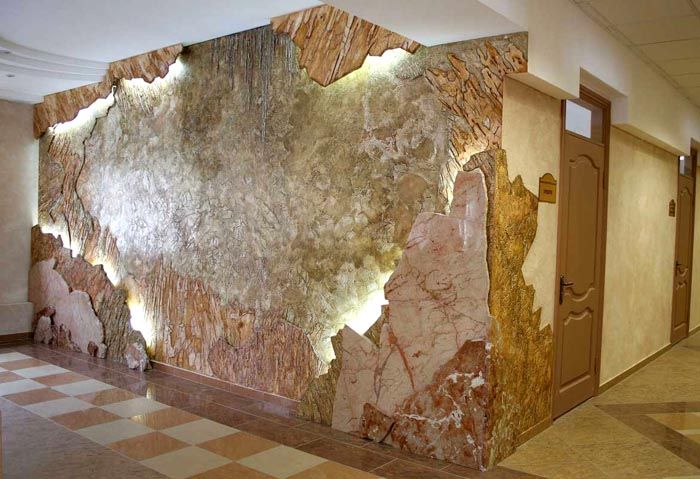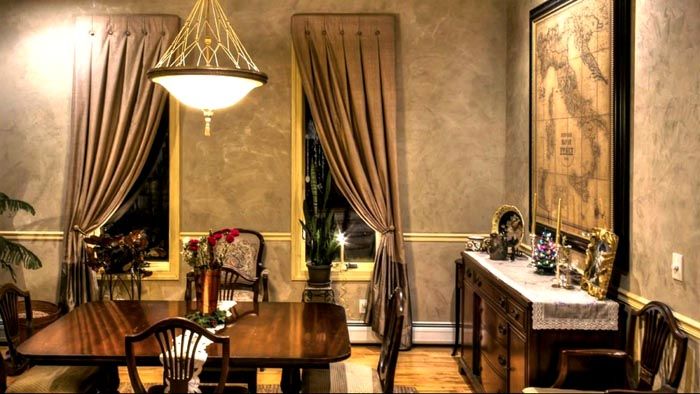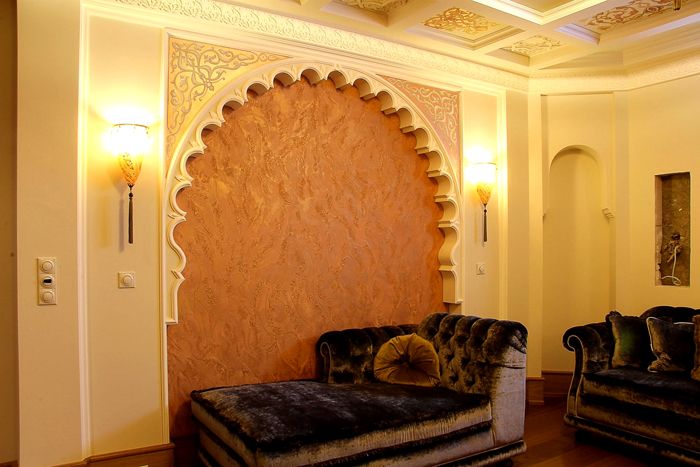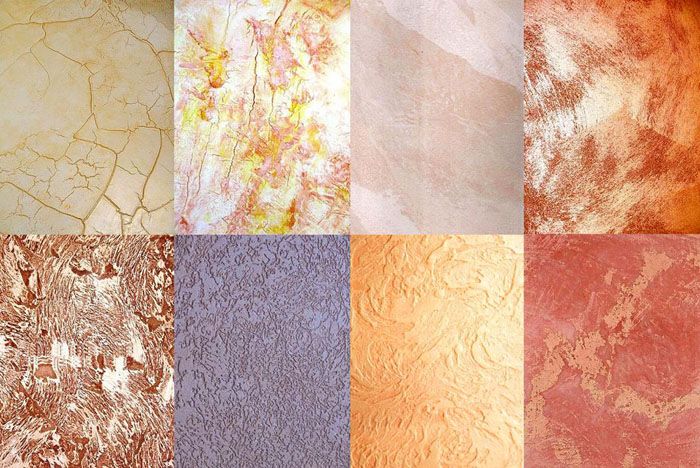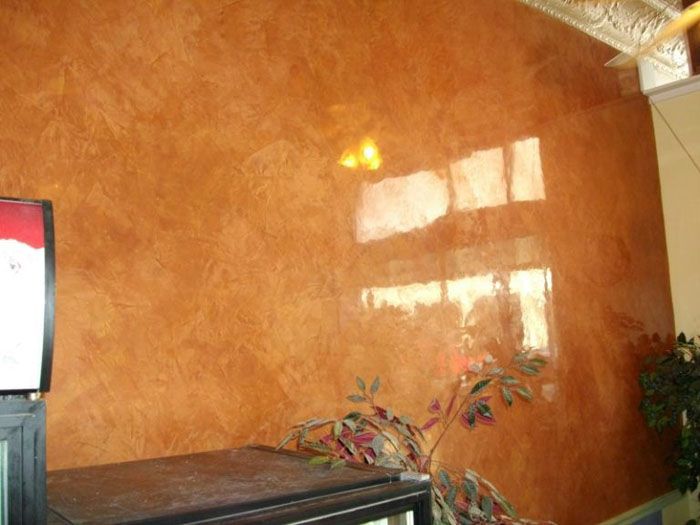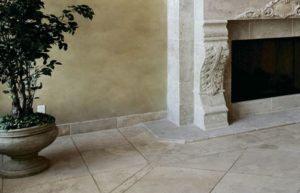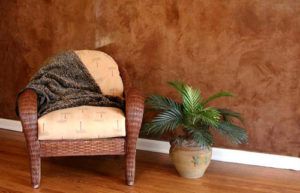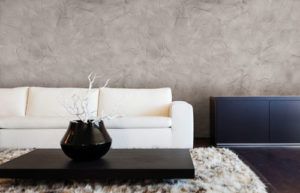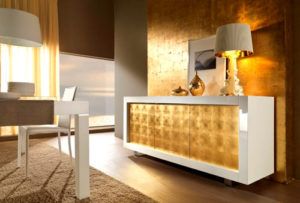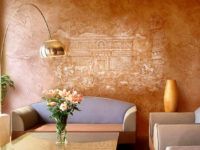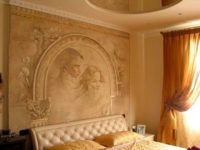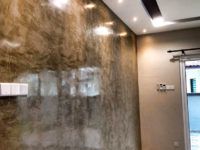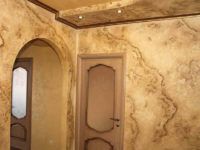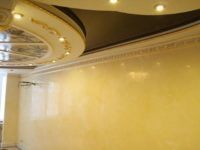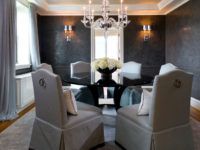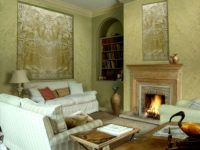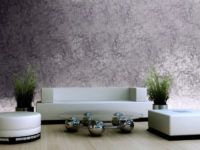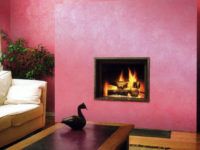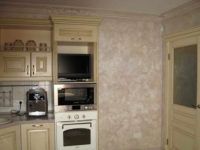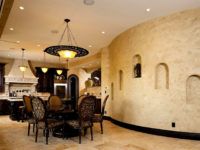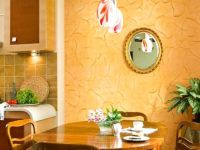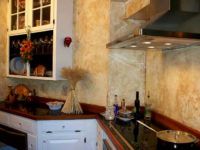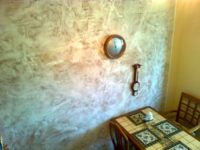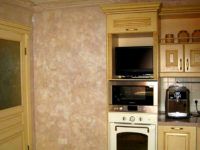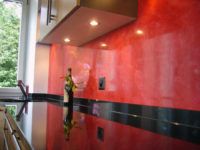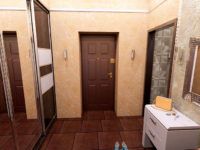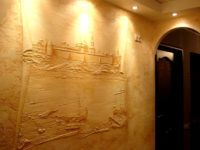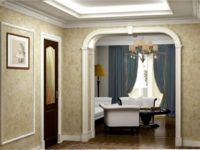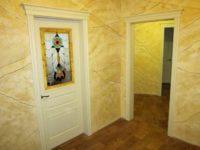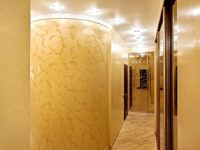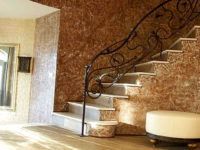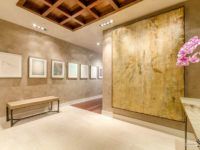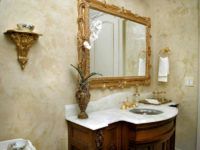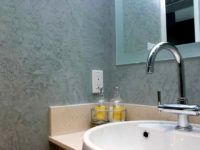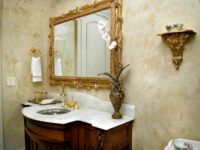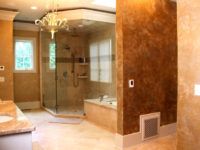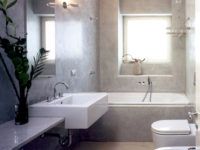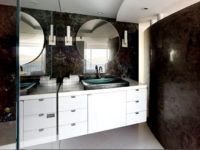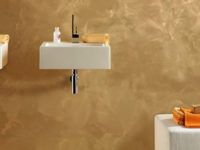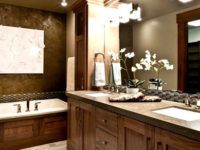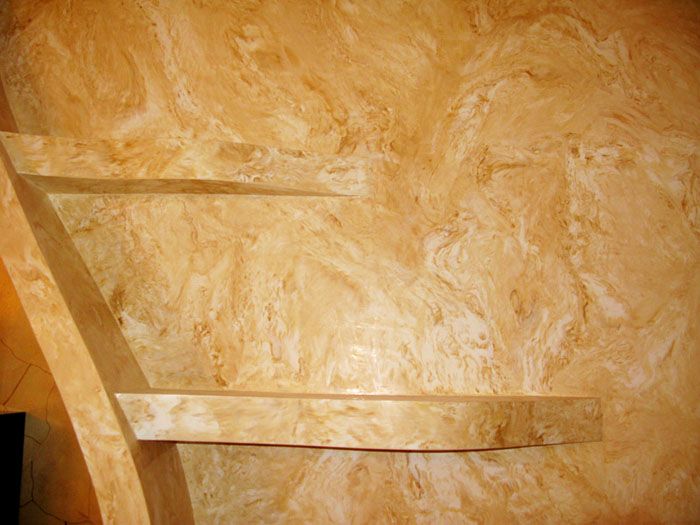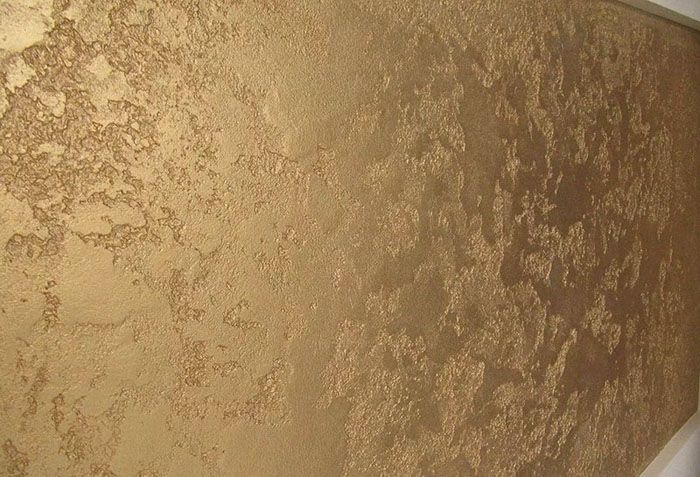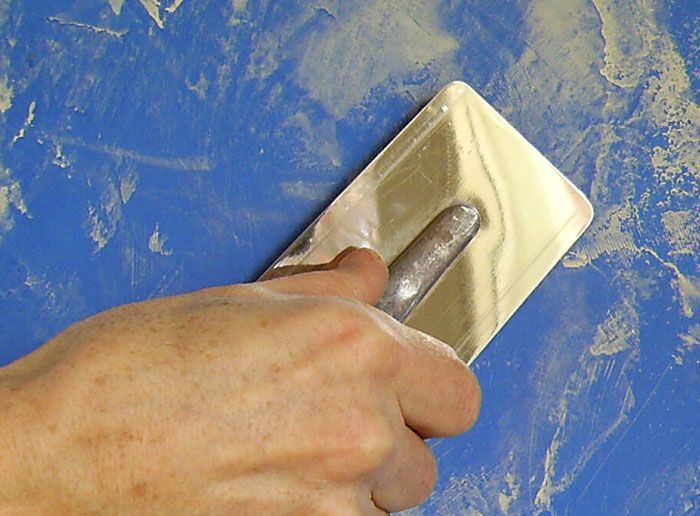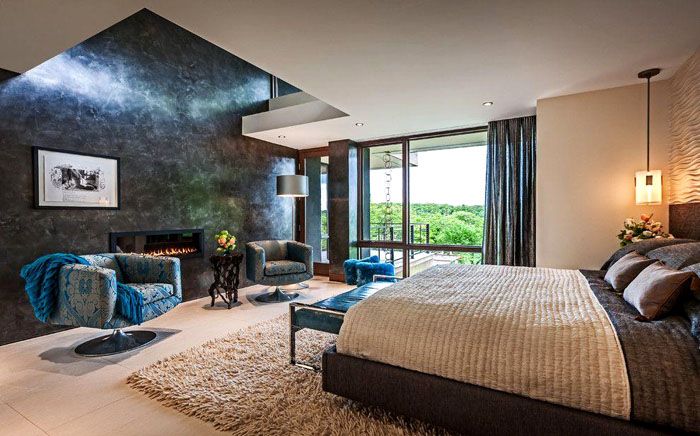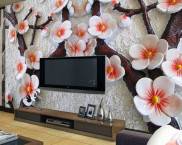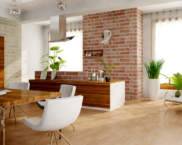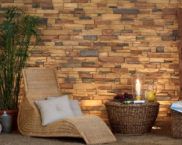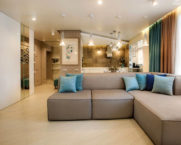Do-it-yourself royal interior: Venetian plaster, photo and video application
Venetian plaster has been known for over 2,000 years. Only the upper strata of society in the old days could afford such a luxurious decorative coating. Application technology was available only to very rich people. There is a mysterious magic that Venetian plaster has. Photos of the transformed interiors only prove this. An ordinary room can be turned into a palace in a short time, creating an elaborate stone imitation on the walls. And how this can be done at the lowest cost, we will consider in today's review.
The content of the article
- 1 What is Venetian plaster, coating features
- 2 Venetian plaster material composition
- 3 Practical tips for making a Venetian
- 4 Basic properties and characteristics of Venetian plaster
- 5 Pros and cons of coverage
- 6 The main types of Venetian plaster
- 7 Imitation - wallpaper for Venetian plaster
- 8 Universal Venetian plaster, photo in various interiors
- 9 DIY Venetian plaster: application technology and video tutorials
- 10 Price for work 1 sq. m of Venetian plaster
- 11 Price for 1 kg of Venetian plaster
- 12 Conclusion
- 13 Video: decorative plaster in the interior photo
What is Venetian plaster, coating features
Finishing with marble powder is usually called Venetian. It has been used as a base for frescoes or painting, as well as as a surface finish for famous Italian churches and palaces. The recipe was restored in the 16th century by the famous Andrea Palladio.
The main building material in the old days was marble; after working with it, many substandard fragments remained.So they began to be used as marble chips, from which Venetian plaster was created. The thin layer of finish was resistant to adverse weather conditions. The architectural creations of those times have survived to this day.
Externally, the coating is a translucent layer, when it hits which the sun's rays are refracted. The wall surface for finishing must be perfectly leveled. Otherwise, the final effect will be unpresentable.
The Venetian can be applied on both concrete and wooden bases. The only place where its use is not desirable is finishing of building facades... It will quickly lose its original beauty and crack.
Venetian plaster material composition
Venetian plaster literally translated from Italian means liquid marble. No wonder that the wall surfaces after finishing look like a monolith made of natural marble or onyx.
In addition to marble components, slaked lime is included in the plaster. It is she who gives the final finish the characteristic strength, which only increases over the years.
Modern technologies offer Venetian plaster with synthetic acrylic binders, quartz chips, flour from natural ingredients. It can be malachite or onyx. Ancient recipes used plant pomace or animal blood as a natural pigment. Now, of course, no one uses it.
It took more than one week to create a solution in Ancient Italy. Currently, manufacturers offer ready-made dry formulations in buckets from 7 kg to 25 kg. Photos of Venetian plaster in the interior of the apartment can be viewed in our gallery.
Practical tips for making a Venetian
There are several options for preparing Venetian plaster.
1st way
It is necessary to buy marble or any other natural stone dust. In addition, slaked lime and pigment for coloring should be available.This method is considered the most difficult to prepare, but it allows you to get the most interesting versions of the Venetian.
2nd way
First option
Required:
- river sand, pre-washed and sieved,
- putty plaster;
- gypsum building mixture.
The ratio is 3/1/1. Mix everything, gradually adding water until a sour cream consistency is reached.
Second option
This recipe will require 2 parts of a deep penetration waterproofing primer. 1 part of water is added to the dry mixture with constant stirring. Then, you should add a starting plaster of plaster. She acts as a liaison. The finished solution should be infused for 15 minutes. Then it is mixed again.
It is important! When using quarry sand, it must be soaked in water to free it from clay masses.
The third option is a ready-made composition
Breed ready plaster necessary according to the manufacturer's instructions. Using a construction mixer or drill with a special nozzle for stirring will significantly speed up the process. In this case, water should not exceed + 10 ° С.
The choice of any of their methods depends only on personal preferences, the desire to try something new and on financial capabilities. The price of the finished material of Venetian plaster will be much higher than that prepared independently.
Basic properties and characteristics of Venetian plaster
Before choosing a coating, you need to know about its properties. Perhaps this will prevent you from unnecessary financial costs when correcting errors.
- Venetian plaster can be done in any shade, in addition, the technology allows you to imitate natural stone;
- the base for Venetian plaster must be prepared to perfect condition. Finishing will not hide wall defects, but only emphasize them;
- the coating is vapor-permeable, that is, it "breathes", there is no effect of a concrete box. In addition, it is waterproof and has increased hardness;
- The service life is at least 20 years.
Texture and the method of application should be chosen based on the characteristics of the general design of the room.
Related article:
Decorative plaster for interior wall decoration. This article will discuss the types of wall plaster, the tools required for its application, and the technology for applying the coating.
Pros and cons of coverage
What is the advantage of Venetian plaster over other types of finishing materials?
- environmental friendliness. The composition contains only natural hypoallergenic components that are approved for use in medical and children's institutions;
- durability. When applied correctly, the plaster will delight the owners for 20 years or more. Over the years, she only gains strength qualities, while maintaining the pristine beauty;
- adaptation to temperature fluctuations. The coating withstands the temperature range -50 ° ÷ + 80 ° С;
- the Venetian is performed with any shade. A variety of textures allows you to make glossy, semi-gloss and embossed options. The finish can be applied not only to walls. Venetian plaster on the ceiling looks luxurious;
- the coating does not require special care. Both dry cleaning and wet cleaning with the use of detergents are allowed;
- moisture resistant.
You should know this! After finishing work in the plaster, carbonization processes are started due to the absorption of carbon from the air masses. Thus, a hard carbon film coating is formed on the surface.
Of the shortcomings, one can only note the high cost of Venetian plaster and the complexity of the work.
The main types of Venetian plaster
Classical Venetian is subdivided into types, in each of which Italian roots are manifested.
Imitation - wallpaper for Venetian plaster
The complexity of the work and the high price of decorative Venetian plaster do not allow many to decide on this type of finish. Manufacturers have offered a good alternative - wallpaper with imitation of Venetian plaster. In addition to excellent external data, wallpapers have undoubted advantages:
- The cost per square meter is from 1,500 rubles to 4,000 rubles, which is several times lower than plaster;
- moisture resistant wallpaper, non-woven it is allowed to wash with a damp sponge using detergents;
- resistance to ultraviolet rays;
- the coating repels dust;
- high wear resistance. With good care, they can last more than 10 years;
- a wide assortment allows you to buy wallpaper for Venetian plaster for any room design;
Universal Venetian plaster, photo in various interiors
Due to its beauty and wide variety of textures, the Venetian is used for finishing work in classic interiors. She will emphasize the sophistication and richness of the Empire and Baroque styles.
We offer you to see Venetian plaster in the interior different styles:
Venetian plaster in the interior of the living room: photo designs
When choice of finishes there are no special restrictions for the living room. You can implement the most non-standard solutions. The Venetian will create an excellent background for the space. The only requirement: good lighting is necessary for the colors to fully open and play.
For small living rooms, it is better to use a finish in muted shades.For the right choice, you can see the photo decorative plaster in living rooms of various sizes and layouts.
Designers advise against making complex patterns in bright colors. The coating will last for more than a decade, the complexity of its application requires significant efforts, and it is unlikely that it will be possible to change it after a short time.
Venetian plaster in the kitchen: photos of interesting techniques
The Venetian can be looked after using soap solutions. In addition, it is waterproof, breathable and resistant to temperature changes. Which allows you to finish the kitchen.
However, finishing apron above the countertop, it is better to make of ceramic or skinned... For all other surfaces, you can use the Venetian as an independent finish or in combination with wallpaper or wood.
Photos of interior solutions in the hallway
The strength characteristics of the coating allow it to be used in rooms with high traffic. In individual houses, you can find the same type of design hallway or hall:
Classic bathroom with Venetian finish
For finishing bathroom it is worth abandoning embossed patterns in favor of smooth surfaces, which are much easier to care for later. It is also easier to apply a protective coat on a smooth substrate.For the bathroom, simple solutions are suitable. Excessive pretentiousness will burden the situation. Photos of bathroom decoration are presented in our gallery:
DIY Venetian plaster: application technology and video tutorials
For this type of work, everything is important: the preliminary preparation of the base, and the quality of the solution, and the application technology. This is a rather laborious process, which will take a lot of time and effort for the master. However, the end result will be a worthy reward for the work done.
Required tools
To work, you will need to purchase the following tools from the store:
- Spatulas special with rounded cuts;
- roller;
- metal graters with a thickness of up to 25 centimeters and for grinding;
- paint brushes;
- bubble level;
- yardstick:
- sandpaper with fine grain;
- rags, sponge;
- several containers (for water and solutions).
It is important! All coating fixtures must be stainless steel. The corners on them should have a rounded shape.
In the video below you can see how to choose a trowel for finishing:
Solution tinting
The prepared solution is white. If a mixture of a different shade is required, it is necessary to add a coloring pigment to the solution. Then mix everything thoroughly with a drill or mixer until absolute homogeneity is obtained.
Video tutorials on applying Venetian plaster
Venetian can be applied with different technologies depending on the desired final result.
Marble effect
The application of the marbled Venetian plaster must be done in arbitrary strokes. 10 minutes after the end of the work, use a trowel to give an arbitrary relief.
The second layer can be performed no earlier than 2 hours later. This is the application of a tint coating. A composition of different shades is applied to the blade of a wide spatula and mixed. There is no need to achieve uniformity. The mass is applied with pulling strokes. After 5 minutes, you can level the coating with a trowel.
After a day, it is necessary to grind the coating with sandpaper or grinder... Then, polish with a stainless steel spatula. At the final stage, the Venetian is covered with wax. After 50 minutes, polish again with a machine with a soft nozzle. After such actions, the coating acquires a unique gloss on the wall.
Another application technology can be viewed in this video:
Classic application
The application technology consists in the application of several layers of finishing (2-5 layers). In this case, the use of several shades is allowed.
- Before starting work, it is necessary to prepare all tint solutions. The first layer is applied with a spatula with a wide blade in arbitrary strokes. After 10 minutes the desired effect is given with a trowel;
- after 2 hours, using a trowel, the layer is leveled to give a metallic sheen;
- the application and polishing of the second and subsequent layers is similar;
- the finishing coat should be polished with a rag or fur attachment using a machine.
Can be waxed if desired.
This process can be seen in the video tutorial:
Textured surface
This method is different from all the others. It uses 2 types of primer: deep penetration and covering, which increases the adhesion of the surface. The second solution will take 2 hours to dry.The mortar is applied to the surface with a trowel in islands up to one centimeter thick. After 6 hours, the sharp edges should be removed with a spatula.
At the final stage, the wall is covered with a finishing layer, to which the finishing varnish should be added. The mixture is applied in the thinnest possible layer, the drying time is 6 hours.The technology of applying textured Venetian implies iron decorative finishing or polishing with a trowel. The final version takes on a metallic sheen on the surface.
A video of applying Venetian plaster with your own hands with a cracking effect will help you easily cope with the process:
Primer application technique
Any interior decoration starts with a primer. For better adhesion, it is better to use a composition containing quartz sand. The primer is applied with a special brush-brush with arbitrary movements. The movements should be the same as for applying the Venetian. Otherwise, they will show through the thin coating and disrupt the overall perception of the picture.
Drying time of the primer - up to 12 hours.
Waxing technique
The wax coating has a protective property. To apply it, the plaster must be completely dry. This can take up to 2 days. The wax coating is applied to the surface with a trowel in a very thin layer. After 12 hours, the wall will be completely ready for final polishing.
Price for work 1 sq. m of Venetian plaster
The price of the work depends on the complexity of the execution:
- The price of classic Venetian plaster is from 800 rubles per square meter;
- marble covering - from 1,200 rubles per 1 sq. m;
- if the coating is done with an ordinary brush - from 600 rubles per 1 sq. m;
- aged surfaces - from 700 rubles per 1 sq.m;
- smooth decor - from 750 rubles per 1 sq. m;
- author's art - from 1200 rubles per 1 sq.m.
Price for 1 kg of Venetian plaster
Before choosing an Italian coating, you need to calculate the cost of work for 1 sq. m of Venetian plaster.
| Photo | Plaster | Packing, kg | Decorative plaster price, rub. | Consumption kg per 1 m² |
|---|---|---|---|---|
 | "Veneto" | 25 | 10500 | 0,63 |
 | "Trevignano" | 5 | 3500 | 0,25 |
 | "Marbella" | 7 | 6200 | 0,35 |
 | Base "Encausto-premyer" | 25 | 12000 | 1,32 |
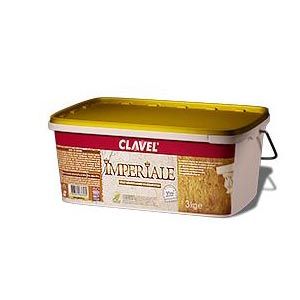 | Topcoat "Imperiale" | 4 | 10500 | 0,20 |
The table shows the material consumption for 1 layer. Some application techniques will require up to 10 coats of finishing. This should also be taken into account in the preliminary calculations. In addition, you need to buy Venetian plaster with a small margin of about 5-10% of the total.
Conclusion
When choosing Venetian plaster as a finishing material, it is important to repeat the decor in the interior elements: cornices, fireplaces... In this case, it is necessary to remember about the lighting, with the help of which the grace of the coating will fully unfold.



